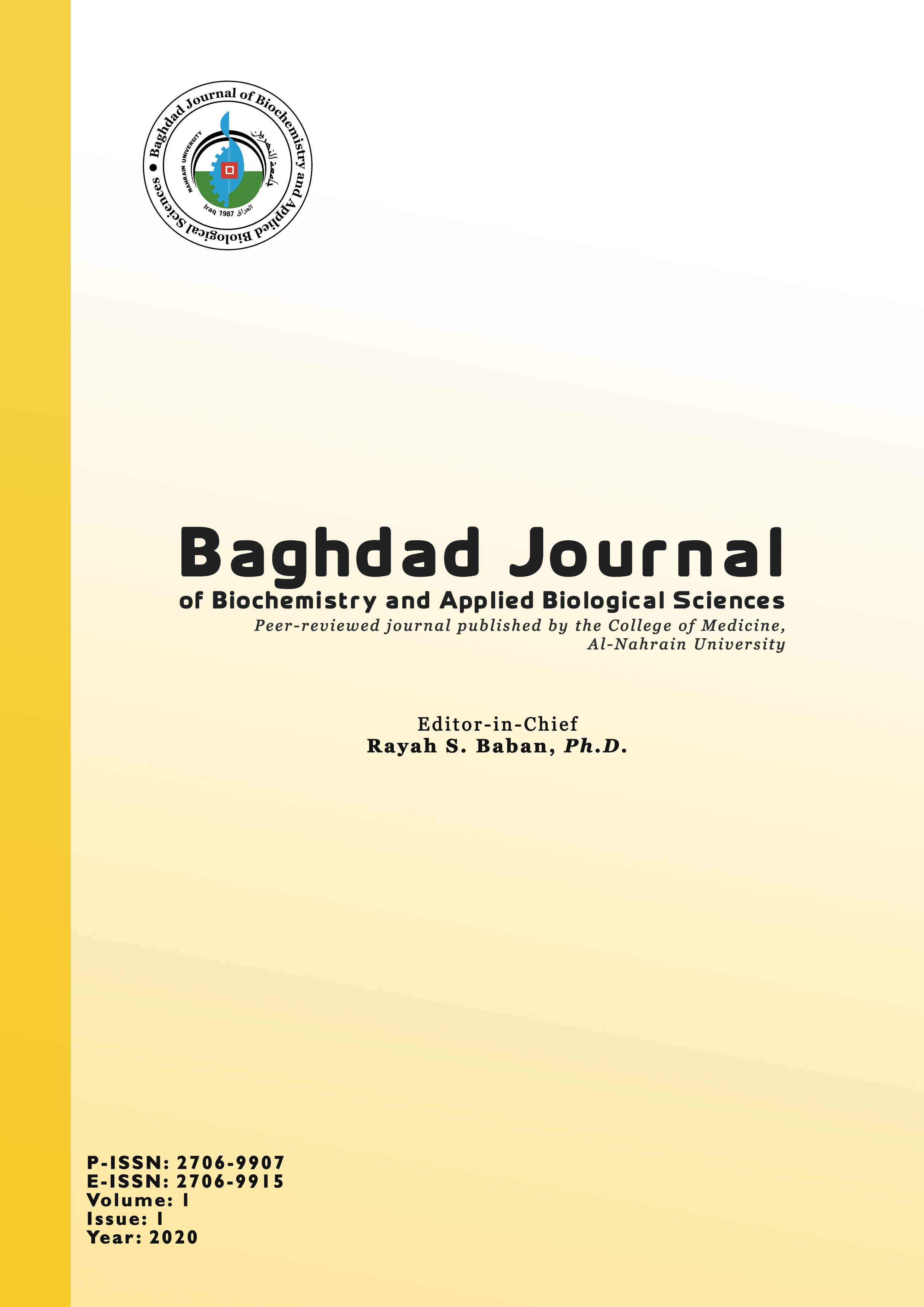Serum lipids .. again, and always!
DOI:
https://doi.org/10.47419/bjbabs.v1i01.26Keywords:
cardiovascular disease, combined hyperlipidemia, hypercholesterolemia, postprandial lipids, random hyperlipidemia, type III hyperlipidemiaMetrics
Downloads
References
Antonio Ceriello et al. “Effect of atorvastatin and irbesartan, alone and in combination, on postprandial endothelial dysfunction, oxidative stress, and inflammation in type 2 diabetic patients”. Circulation 111(19) (2005), pp. 2518–2524.
B H Bahir, A H Al-Hadi, and G Al-Shamma. “Why not postprandial serum lipids?” Zanco J Med Sci 12 (2008), pp. 165–168.
Børge G. Nordestgaard et al. “Nonfasting triglycerides and risk of myocardial infarction, ischemic heart disease, and death in men and women”. JAMA 298(3) (2007), pp. 299–308.
Christopher S Boot et al. “Evaluation of the Non-HDL Cholesterol to Apolipoprotein B Ratio as a Screening Test for Dysbetalipoproteinemia”. Clin Chem 65(2) (2019), pp. 313–320.
E A Stein. Text Book of Clinical Chemistry. Ed. by N W Teitz et al. Philadelphia: W.B. Saunders Co, 1986, pp. 879–886.
G A Al-Shamma. “A new look for an old subject”. Iraqi J Med Sci 8 (2010), pp. 1–2.
H Chung and W Kim. “Non-fasting triglyceride levels as a superior predictor of cardiovascular disease”. Circ J 84 (2020), pp. 386–387.
Hilary P. Glazer et al. “Hypercholesterolemia is associated with hyperactive cardiac mTORC1 and mTORC2 signaling”. Cell Cycle 8(11) (2009), pp. 1738–1746.
J G Robinson. “Management of familial hypercholesterolemia: A review of the recommendations from the national lipid association expert panel on familial hypercholesterolemia”. J Manag Care Pharm 19(2) (2013), pp. 139–149.
J Lopez-Miranda and C Marin. “Dietary, physiological, and genetic impacts on postprandial lipid metabolism”. In: Fat Detection: Taste, texture, and post ingestive effects. Ed. by Jean-Pierre Montmayeur, Johannes le Coutre, et al. CRC Press/Taylor & Francis, 2009, pp. 417–460.
L. Fauchier. “Cholesterol levels and cholesterol lowering in idiopathic dilated cardiomyopathy”. Eur Heart J 26(18) (2005), pp. 1931–1931.
Qian Han et al. “Dysregulation of cardiac lipid parameters in high-fat high-cholesterol diet-induced rat model”. Lipids Health Dis 17(1) (2018), pp. 255–255.
R W Mahley and S C Rall Jr. “Apolipoprotein E: Far more than a lipid transport protein”. Annu Rev Genomics Hum Genet 1 (2000), pp. 507–537.
Raghava S. Velagaleti et al. “Relations of lipid concentrations to heart failure incidence”. Circulation 120(23) (2009), pp. 2345–2351.
Ronald M. Krauss. “Atherogenic Lipoprotein Phenotype and Diet-Gene Interactions”. J Nutr 131(2) (2001), 340S–343S.
S Karr. “Epidemiology and management of hyperlipidemia”. Am J Manag Care 23(9) (2017), pp. 139–148.
Sandeep Bansal et al. “Fasting compared with nonfasting triglycerides and risk of cardiovascular events in women”. JAMA 298(3) (2007), pp. 309–316.
Silvia Moretti et al. “A mast cell-ILC2-Th9 pathway promotes lung inflammation in cystic fibrosis”. Nat Commun 8(1) (2017).
Xiaowei Zhu et al. “Atherogenic index of plasma is a novel and better biomarker associated with obesity: a population-based cross-sectional study in China”. Lipids Health Dis 17(1) (2018), pp. 37–37.
Y Cheng et al. “Large accumulation of collagen and increased activation of mast cells in hearts of mice with hyperlipidemia”. Arq Bras Cardiol 109 (2017), pp. 404–409.
Yu Si Yao, Tu Di Li, and Zhi Huan Zeng. “Mechanisms underlying direct actions of hyperlipidemia on myocardium: An updated review”. Lipids Health Dis 19(1) (2020), pp. 23–23.
Downloads
Published
Issue
Section
Categories
License
Copyright (c) 2020 Ghassan A. Al-Shamma

This work is licensed under a Creative Commons Attribution-NonCommercial 4.0 International License.
The authors retain all proprietary rights, including copyright, such as patent and trademark rights and rights to any process or procedure described in the article.









